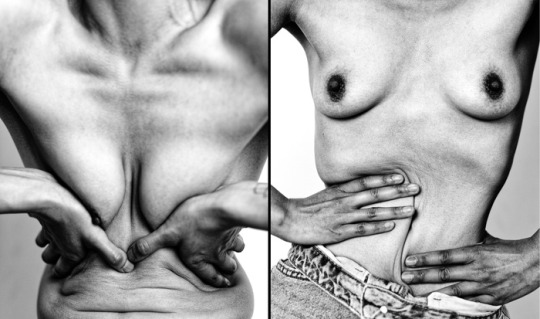#white skin
Text

#clear skin#white skin#fair skin#flawlessbeautyqueens#+18 or +adult only#flawlesscelebs#flawlessgentlemen#flawlesswomen#flawlessfemale#immaculate#so beautiful#absolutely stunning#absolutely beautiful#so gorgeous
53 notes
·
View notes
Text

source: Thanks to @nothingeastofme
Luis Ricardo Falero, A classical beauty, 1889.
Luis Ricardo Falero, Una belleza clásica, 1889.
136 notes
·
View notes
Text

Force - 2020
© Denis Garnier
20 notes
·
View notes
Text

⚡️artist: CuriosumArt
#star trek fan art#data soong#brent spiner#st tng#star trek the next generation#androids#data star trek#lt commander data#star trek tng#commander data#star trek data#i love saying soongian#happy friday#glowing eyes#circuitry#positronic#gold gold gold#wires#white skin#low key giving data a halo#synthetic life#synthetic commanders#artificial intelligence
35 notes
·
View notes
Text

rianne van rompaey (bad quality)
#rianne van rompaey#riannee#van#rompaey#red#redhead#red hair#freckles#white#white shirt#pink#pink lips#white skin#blue#blue eyes
10 notes
·
View notes
Text

...entraste con tu lengua y su tinta a la curva de mi boca, a ciegas intentabas tocar con tus dientes alguno tibio mío, respondo succionando tu sabor de hiedra , estoy atento porque entre las lenguas se escuchan sonidos marinos.
@eternalheave, Martinez Mayo 2023, Buenos Aires
ph, MB
#visual poetry#buenos aires#naturalezas íntimas#male skin#latin men#tatooart#tattoos#sexy tatoo#black and white#young boy#white skin#deep breath
20 notes
·
View notes
Text



Viggo Mortensen and Mahershala Ali in “Green Book”
(Patti Perret / Associated Press)
To the editor: Erin Aubrey Kaplan makes an excellent point in her discussion regarding racism. Her claim is that in the movie “Green Book,” Virgo Mortensen’s character seems to make a sudden shift away from his racial prejudice that is unrealistic.
Overcoming racism or any other prejudice is a process that often takes generations. Our consciousness is continually evolving and it requires not only understanding and compassion toward our fellow man but also to our former selves.
Our negative beliefs about “the other” are generally inherited from our families and culture. However, each of us is responsible for changing these attitudes through deeper introspection and acknowledgment of any lingering and sometimes subtle prejudices.
Kathy Welsh, Claremont
..
To the editor: One thing Kaplan seems to have overlooked is the profound lesson embodied in the Rodgers and Hammerstein 1949 song, “You’ve Got to be Taught.”
The song, sung by a young white naval officer in love with a native Pacific Islander, tells us, “You have to be taught to hate and fear … people whose eyes are oddly made and people whose skin is a different shade … to hate all the people your relatives hate, you’ve got to be carefully taught.”
Subscribe to Continue Reading
As a senior citizen, I do believe that change is happening. I have seen many examples of color and gender blindness in the younger generations. This in spite of the obstacles posed by vast income inequality and disproportionate educational opportunity. I do think we will get there.
But, the “evolution” of which Kaplan writes will only move us forward when parents and teachers stop teaching our children what we older folks were taught.
Richard Klinger, Sherman Oaks
I am white. As an academic, consultant and writer on white racial identity and race relations, I speak daily with other white people about the meaning of race in our lives. These conversations are critical because, by virtually every measure, racial inequality persists, and institutions continue to be overwhelmingly controlled by white people. While most of us see ourselves as “not racist”, we continue to reproduce racist outcomes and live segregated lives.
In the racial equity workshops I lead for American companies, I give participants one minute, uninterrupted, to answer the question: “How has your life been shaped by your race?” This is rarely a difficult question for people of color, but most white participants are unable to answer. I watch as they flail, some giving up altogether and waiting out the time, unable to sustain 60 seconds of this kind of reflection. This inability is not benign, and it certainly is not innocent. Suggesting that whiteness has no meaning creates an alienating – even hostile – climate for people of color working and living in predominantly white environments, and it does so in several ways.
If I cannot tell you what it means to be white, I cannot understand what it means not to be white. I will be unable to bear witness to, much less affirm, an alternate racial experience. I will lack the critical thinking and skills to navigate racial tensions in constructive ways. This creates a culture in which white people assume that niceness is the answer to racial inequality and people of color are required to maintain white comfort in order to survive.
An inability to grapple with racial dynamics with any nuance or complexity is ubiquitous in younger white people who have been raised according to an ideology of colorblindness. I have been working with large tech companies whose average employees are under 30 years old. White employees are typically dumbfounded when their colleagues of color testify powerfully in these sessions to the daily slights and indignities they endure and the isolation they feel in overwhelmingly white workplaces. This pain is especially acute for African Americans, who tend to be the least represented.
While the thin veneer of a post-racial society that descended during the Obama years has been ripped away by our current political reality, most white people continue to conceptualize racism as isolated and individual acts of intentional meanness. This definition is convenient and comforting, in that it exempts so many white people from the system of white supremacy we live in and are shaped by. It is at the root of the most common kind of white defensiveness. If racists are intentionally and openly mean, then it follows that nice people cannot be racist. How often will a white person accused of racism gather as evidence to the contrary friends and colleagues to testify to their niceness; the charge cannot be true, the friend cannot be racist, because “he’s a really nice guy” or “she volunteers on the board of a non-profit serving under-privileged youth”. Not meaning to be racist also allows for absolution. If they didn’t mean it, it cannot and should not count.
Thus, it becomes essential for white people to quickly and eagerly telegraph their niceness to people of color. Niceness in these instances is conveyed through tone of voice (light), eye contact accompanied by smiling and the conjuring of affinities (shared enjoyment of a music genre, compliments on hair or style, statements about having traveled to the country the “other” is perceived to have come from or knowing people from the other’s community). Kindness is compassionate and often implicates actions to support or intervene. For example, I am having car trouble and you stop and see if you can help. I appear upset after a work meeting and you check in and listen with the intent of supporting me. Niceness, by contrast, is fleeting, hollow and performative.
In addition to niceness, proximity is seen as evidence of a lack of racism. Consider the claims many white people give to establish that they aren’t racist: “I work in a diverse environment.” “I know and/or love people of color.” “I was in the Peace Corps.” “I live in a large urban city.” These are significant because they reveal what we think it means to be racist. If I can tolerate (and especially if I enjoy and value) proximity, claims of proximity maintain, I must not be racist; a “real” racist cannot stand to be near people of color, let alone smile or otherwise convey friendliness.How 'white fragility' reinforces racism – video explainer
In a 1986 article about black students and school success, Signithia Fordham and John Ogbu describe a “fictive kinship” between African Americans, a kinship that is not consanguineal (by blood) or affinal but derived from the assumption of shared experience. The racial kinship white people attempt to draw from niceness might be seen as a false or fabricated affinity. Most white people live segregated lives and in fact have no lasting cross-racial relationships. We are in the position to choose segregation and often do. The claims of non-racism that we make are therefore based on the most superficial of shared experiences: passing people of color on the street of large cities and going to lunch on occasion with a co-worker.
Note that our cursory friendliness does not come without strings. Consider the case of a white California woman who called the police this past May when a group of black Airbnb guests did not return her smile. The expectation is that the “nod of approval”, the white smile, will be reciprocated. This woman, like all the other white people who have called the police on people of color for non-existent offenses, vigorously denied she was racist. After all, she did smile and wave before reporting them.
I have heard many black Americans talk about the awkwardness of white people “over-smiling”. The act is meant to convey acceptance and approval while maintaining moral integrity, but actually conveys white racial anxiety. Over-smiling allows us to mask an anti-blackness that is foundational to our very existence as white. A fleeting benevolence, of course, has no relation to how black people are actually undermined in white spaces. Black friends have often told me that they prefer open hostility to niceness. They understand open hostility and can protect themselves as needed. But the deception of niceness adds a confusing layer that makes it difficult for people of color to decipher trustworthy allyship from disingenuous white liberalism. Gaslighting ensues.
The default of the current system is the reproduction of racial inequality. To continue reproducing racial inequality, the system only needs for white people to be really nice and carry on – to smile at people of color, to go to lunch with them on occasion. To be clear, being nice is generally a better policy than being mean. But niceness does not bring racism to the table and will not keep it on the table when so many of us who are white want it off. Niceness does not break with white solidarity and white silence. In fact, naming racism is often seen as not nice, triggering white fragility.
We can begin by acknowledging ourselves as racial beings with a particular and limited perspective on race. We can attempt to understand the racial realities of people of color through authentic interaction rather than through the media or through unequal relationships. We can insist that racism be discussed in our workplaces and a professed commitment to racial equity be demonstratedby actual outcomes. We can get involved in organizations working for racial justice. These efforts require that we continually challenge our own socialization and investments in racism and put what we profess to value into the actual practice of our lives. This takes courage, and niceness without strategic and intentional anti-racist action is not courageous.
#White racism gets passed down through generations. It’s up to individuals to stop that - Los Angeles Times#white racism#white hate#white skin
20 notes
·
View notes
Text

Finally white diamond
23 notes
·
View notes
Text




#blue archive#sunaookami shiroko#silver hair#blue eyes#white skin#hands on hair#swimsuit#sukumizu#animal ears#competition swimsuits#pansy#kuda izuna#izuna#fox ears
49 notes
·
View notes
Text

#lore star trek#lore tng#lore soong#positronic#star trek the next generation#st tng#hands#bionic hand#cybernetics#white skin#circuitry#bratty disaster android#soong type android murder edition#lt commander data#descent star trek#gold gold gold#star trek tng#circuit board#bioplastics
40 notes
·
View notes
Text
Otsutsuki part two





















#madara uchiha#obito uchiha#white skin#naruro shippuden#Urashiki otsutsuki#Kinshiki otsutsuki#momoshiki otsutsuki#otsutsuki
2 notes
·
View notes